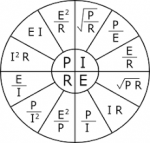No, you may be thinking of this:
a * (b + c) = (a * b) + (a * c ) (distributive law of multiplication)
The parentheses on the right hand side are usually omitted, as it is understood that you group multiplication operations together before doing addition operations.
With multiplications only, the order doesn't matter:
a * b = b * a (commutative law)
a * (b * c) = (a * b) * c (associative law)
And so again, when multiplying more than two numbers, the parentheses are usually omitted, because both options give the same result.
Division throws a wrench into things, order starts to matter. I think of division as "take the reciprocal and then multiply". So if you make that explicit (using Recip(a) to mean 1/a, the reciprocal of a) and keep track of which number get the reciprocal, it all works out:
a * (b / c ) = a * (b * Recip(c)) = (a * b) * Recip(c) = (a * b) / c
Because of the above, it's safe to write a * b / c, there's no ambiguity. But something like a * b / c * d should be avoided, as it is not clear if you mean a * (b / c) * d or a * b / (c * d), which are different.
Lastly, Recip(b * d) = Recip(b) * Recip(d), so you have the general rule for multiplying two fractions of "multiply the numerators and multiply the denominators":
(a / b ) * (c / d) = a * Recip(b) * c * Recip(d) = a * c * Recip(b) * Recip (d) = a * c * Recip(b * d) = (a * c) / (b * d)
Wayne



